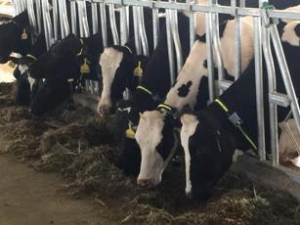Health and Welfare
Early Detection of Health Issues

Many words have been written about the early detection capabilities of animal monitoring (let us be clear that the “early” part of illness detection is only a relative term pertaining to the identification of a sick cow before she would have been identified by farm personnel).
How does a monitoring system find sick cows earlier than farm staff?
Graph displays eating, rumination, respiration, activity levels, rest behavior and laying behavior of an individual cow.
First and foremost, an animal monitoring system relies on objective data versus conventional management’s reliance on subjective evaluation of cow status. There’s little opinion in the collar or ear tag.
The continuous measuring and recording of an individual cow’s behavior results in a quantitative measurement of the “normal” behavior and the tracking of changes from normal behavior.
Data objectivity enables the identification of subtle changes in cow status and improves the consistency of the monitoring process across the entire herd. A drop of 30 minutes in rumination in a day is an important bit of information that is easily displayed by a monitoring system, while barely noticeable in a conventionally managed farm.
The second reason for electronic animal monitoring’s early detection advantage is that it looks for predictive signals of an oncoming health issue instead of the symptoms. Think of the day before you come down with the flu—you just don’t feel right… You may lose your appetite, feel tired. You know the feeling.
Guess what? Cows are very much the same as we are in this regard!
Conventional herd management is focused on looking for cows displaying signs of illness and/or a decline in performance. In an electronically monitored herd, we look for changes in the cow’s behavior that have been found to be strongly correlated to a developing illness. In most cases, the change in behavior is evident before clinical signs appear.














